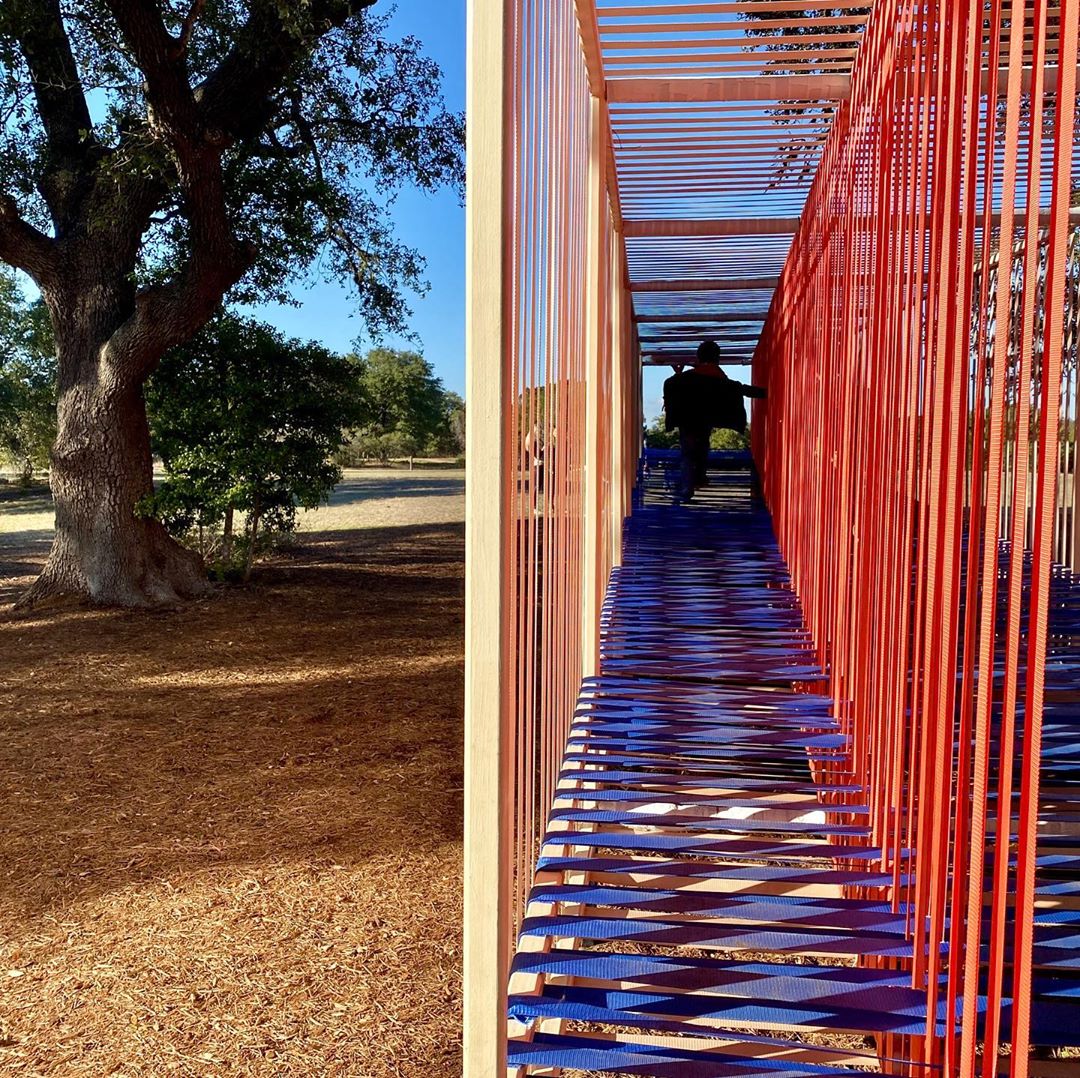

What if Dieter Rams designed your company?

Last weekend, I watched the Dieter Rams documentary. It’s an incredible film, full of moments that make you pause. But Rams said one thing that really stood out: “Design only works when it really seeks to achieve something for humanity.”
This struck a chord with me because I believe that startup ideas work best when they seek to achieve something for humanity. It’s the underlying thesis for Spero Ventures.
This goes beyond product and to the gestalt of the startup itself. As a founder, Dieter Rams’ principles are relevant to designing both your product and your company.
Here are some of the ways Dieter Rams’ principles apply to building companies and not just products.
Good design is innovative
“The possibilities for innovation are not, by any means, exhausted. Technological development is always offering new opportunities for innovative design. But innovative design always develops in tandem with innovative technology, and can never be an end in itself.”
You already know that your product should be one that advances the world with your innovation instead of being yet another me-too product in a crowded space.
The same should be true of your company. While a great product will attract great talent, a company that is innovative, that pushes the boundaries of how work and collaboration happen, that experiments with how culture evolves and permeates, is also important.
To attract the very best, your company—how you build and run it—should move us toward the world that you want to live in.
Good design is honest
“It does not make a product more innovative, powerful or valuable than it really is. It does not attempt to manipulate the consumer with promises that cannot be kept.”
Your product keeps its promises to your customer. It’s equally important to have that honesty as a company.
The only thing you have is your reputation, with your customers, your employees, your collaborators, and your board. Hold yourself to the highest standards. Do not do anything nefarious (like collecting data without their permission, misrepresenting facts etc.) Build the honest, exceptional company you want to see in the world.
Good design is long-lasting
“It avoids being fashionable and therefore never appears antiquated. Unlike fashionable design, it lasts many years – even in today’s throwaway society.”
Values stand the test of time.
Figure out your values and let them guide your company. What is it going to take to make your company last? Build your company around a core set of values that are everlasting.
Good design is thorough down to the last detail
“Nothing must be arbitrary or left to chance. Care and accuracy in the design process show respect towards the user.”
Be particular. You know it will show in your product. It will also show in how you build your company.
The best founders are fanatical about their culture, who they hire, how they hold their meetings. When the founders take this approach, it permeates the whole company and everyone focuses on the details that will delight1.
Good design is environmentally friendly
“Design makes an important contribution to the preservation of the environment. It conserves resources and minimizes physical and visual pollution throughout the lifecycle of the product.”
Climate change will be the defining problem and opportunity of our age. Even if your product doesn’t directly affect climate change and sustainability, your company should. The decisions you make should be driven by a deep care for the only planet we have. It’s a responsibility that every person has, and every leader should embrace.
These principles are design principles, sure. They are also incredibly useful leadership principles that can help with company design. Startups that think through some of these will be better equipped to deliver great product, hire the best people, and create value over the long term.
They are also life principles.
Watching the documentary was incredible because these are not just the principles Rams uses to design products, but rather principles he has used to design his own life. He lives by these principles. The documentary allows you to see into his life, his house, his desk, his garden and how he uses his time.
The style of the documentary reflects the content beautifully. The way the documentary is shot (minimal, sometimes in extreme close up, always with a locked down camera), how it is edited, and presented is very much in keeping with Dieter Rams’ design principles. It’s beautiful, minimal and captivating.
It is inspiring to see his world. I highly recommend you watch the documentary.
I wrote a post on knowing the details and why it matters. ↩

What to Do When the “Shiny-Object Savior” Wants to Join Your Startup

You’re a startup founder. You’ve gone through the rollercoaster, and things are going really well. Now you need to scale, because you’re overwhelmed with work, barely surviving.
Enter the “shiny-object savior.”
This person is [insert letter]VP at [insert big name company]. She seems to have it all – the titles, the accolades, the network, and could be the one (and only) person to actualize the company’s potential.
But there’s a risk that if they aren’t the right person for the job, they could significantly derail you both in terms of your milestones and in terms of your company’s culture.
Before you get starry-eyed, here’s the one question you should really ask yourself: Can they be successful in your company?
Here are the key factors to think about to answer this question.
They might not have accomplished anything meaningful/been successful.
Dig into accomplishments, not just the titles on the resume. A glossy resume could just be the result of their artfully job-hopping to make them seem like they are on an upward trajectory. Be wary of people who have never gotten a promotion within a company, as promotions are one sign of recognition for a job well done.
They might only function well within a certain culture.
Even if someone was able to get promoted or be successful at one company, they might be a great fit with that company culture—and only that culture. If that’s your culture, great. Hire them.
If the culture is different from what you are trying to build, be aware that they are going to bring elements of the old culture with them, because that’s the way they know how to thrive.
They might not have a growth mindset.
In my experience, successful startups need to be constantly learning, constantly ensuring product-market fit and constantly looking for new avenues of growth.
For a leader to thrive in an environment like this, they have to be able to navigate changes and know when to change course appropriately and when to stick to the plan. Have them tell you about a time when new data caused them to do something differently. Have them tell you about their world view, what has shaped it and how they think about changing that view.
Bottom line: Do not rush a big hire. Don’t get starry-eyed over a resume. Dig deep, know who they are, and do your references. The time spent upfront will significantly increase your chances of hiring the right person.

We Need a New Resume
Because Actions Speak Louder Than Job Titles
On a film set, every worker is hand-picked to be there. Usually, you get hand-picked because someone on that set knows your work. They recommend you because you are good at what you do and because you are a pleasure to work with.
The tech/startup world is not too different. As work evolves, I believe that more of the job market will shift toward this tour-of-duty model, in which people come together to solve a specific problem. Increasingly, the future of work will look much more like a film set.
To reflect this project-based work, we need a new kind of resume. This requires surfacing a different set of data—not just statements by the individual, but validation by the actions of those who work with them.
This requires two key changes to how the world of resumes works:
1. The new resume should capture the fact that great people get picked repeatedly to be on ambitious teams.
If I, as a director, choose to work with a producer or cinematographer repeatedly, it means I respect their capabilities and enjoy working with them. I am vouching for them with my actions. This data is gold1.
Similarly, in the tech world, I might hire the same engineer for multiple startups. By hiring her repeatedly, I’m vouching for her with my actions. Ideally, her resume should highlight the repeat engagements she’s earned, because the biggest validation by any work colleague is “Yes, I would choose to work with you again.”
When someone is always selected, it’s because they are great. As the world moves to project-based work, this will be the key signal.
2. The new resume needs to capture the value created, even in a short time.
While people may only participate for a short period of time (1-2 years, 2-3 months etc.), they may still have an outsized impact on value creation. So, the new resume needs to capture the value that the person created, which is weighed more highly than their tenure. (By the way, we also need a different compensation system for this, but that’s a topic for another post).
The new resume could make work better for everyone
Here’s how:
- Shorter projects lower the bar in a good way: When a team is hiring for a shorter project, it makes it easier to be considered or to break into an industry. Instead of having to be vetted by dozens of people, all you have to do is convince someone to let you onto a project, knowing that if it doesn’t work, you will be let go.
- Creating value is what’s valued: Fast learners, those who learn and apply those skills quickly, and hard workers who are collaborative and move things forward, will be rewarded. Impressing the people you work with will ensure you’ll be brought on again.
- Flexibility increases: Teams can bring on and let go of people as needed. And people can commit to shorter-term gigs or fire clients that don’t fit what they are looking for.
Right now, I don’t see a good tech solution for this. If you are working on something like this, or spend your time thinking about this, please do get in touch.


A Whole Lot Of Not Quitting

On Sunday, Carol Dysinger won the Oscar for her short documentary, Learning to Skateboard in a Warzone (If You’re a Girl).
It’s a delightful film that will make you both laugh and cry, but this post isn’t a film review. It’s about a life lesson that I learned from her.
In 1977, when Dysinger was twenty-two years old, she won the coveted Student Academy Award. Frank Capra, famed director of You Can’t Take it with You and Mr. Smith Goes to Washington, presented the award. It was (and is) a big deal — of all the student films made around the world, only one can win. Everyone, including Dysinger, assumed her career would take off like a rocketship from there.
Of course that stuff only happens in the movies.
Dysinger’s real story was more of a struggle. She has worked in Afghanistan for almost 20 years, making documentaries that won prizes and grants from top festivals. But nothing compared to her early win.
I met Dysinger in 2009 when I joined a grad film program where she was the editing professor. She was working on a film called One Bullet Afghanistan, which, more than twelve years later, she’s still working on.
It was during this time that Dysinger was asked to make a film about the girls of Skateistan — a school where underprivileged kids learn basic academics and how to skate. She accepted. Then this film, this side project, just took off.
Learning to Skateboard was nominated at major festivals and won at Tribeca and the BAFTAs before winning the Oscar for Documentary Short Subject.
43 years after Carol Dysinger won the student academy award, she won the grown-up version.
When I was her student, Dysinger’s favorite piece of advice was that becoming a filmmaker would take “a whole lot of not quitting” — a phrase she repeated during her acceptance speech.
A whole lot of not quitting. That’s great advice for pretty much anything. Everything takes much, much longer than we think it will. We get frustrated, upset and dejected. After six years or ten, we give up.
Sometimes quitting is the right choice. But often, those who reach the pinnacle do so not with shortcuts or luck, but because of a whole lot of not quitting. For decades.
I’m thrilled to see one of the good ones succeed — four long decades after her first taste of success.
